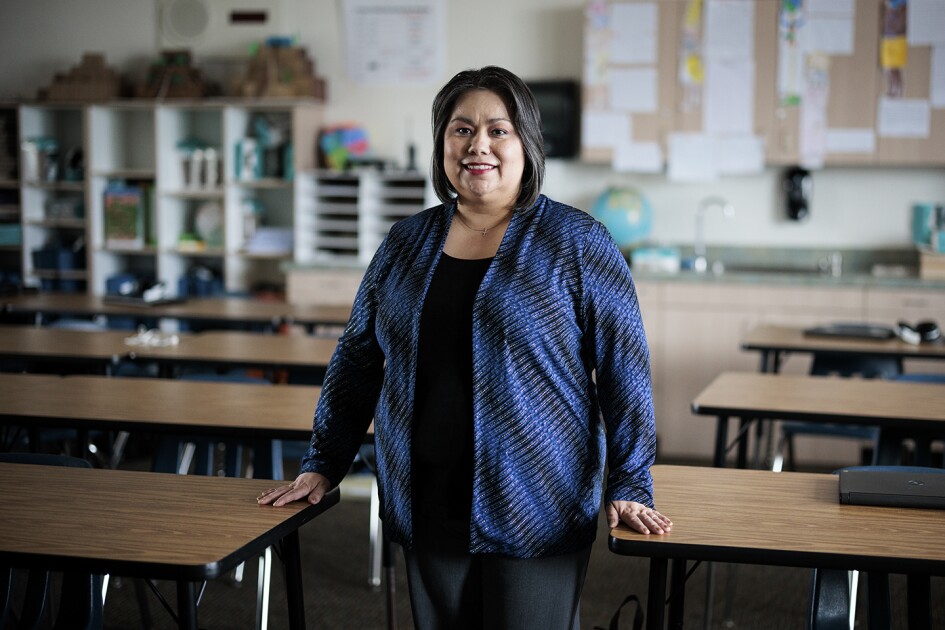A study of 820 1st grade classrooms suggests that many are not as warm, friendly, and academically stimulating as some experts think they ought to be.
According to the research, published this month in the Elementary School Journal, only 23 percent of classrooms could be judged to be of “high quality” in both their instructional practices and social and emotional climate.
Another 31 percent of classrooms—the largest percentage in the study sample—were deemed to have a positive emotional climate, but a low level of academic quality. Researchers judged 28 percent of the classrooms to be “mediocre”; the remaining 17 percent got a rating of “low overall quality.”
“In some sense, the glass is half empty and half full,” said Robert C. Pianta, a study co-author and the dean of the University of Virginia’s education school, in Charlottesville. His co-author is Megan W. Stulman, a senior research scientist at the school’s Center for Advanced Study of Teaching and Learning.
“To find that 23 percent of classrooms are really top-notch is a good thing,” Mr. Pianta continued. “But it was surprising to see so many classrooms at the lower end, particularly since, on average, emotional quality in 1st grade classrooms is quite high.”
The findings are the latest to emerge from the Study of Early Child Care and Youth Development, a 17-year-long research effort financed by the federal National Institute of Child Health and Human Development, or NICHD. (“Study Casts Doubt on Value of ‘Highly Qualified’ Status,” April 4, 2007.)
To measure quality, trained raters spent a day in each of the 820 classrooms collecting detailed observations on the goings-on there. The classrooms were scattered across 32 states in 700 regular public, charter, and private schools.
Teachers who ignored pupils’ questions, for example, might get low ratings on the system’s sensitivity scale. On the instructional side, high ratings went to classrooms in which teachers engaged students in discussions, regularly provided pupils with constructive feedback on their work, and invited children to stretch their thinking, among other characteristics and practices.
Achievement Links
In previous studies, Mr. Pianta and his colleagues have shown that less-advantaged students do as well as their better-off peers in classrooms where teachers exhibit the practices that the researchers’ scoring system measures—sensitivity, positive emotional support, helpful feedback, and organization, among other features.
Those results have spurred some states and districts to adopt the scale, known as the Classroom Observation System, for use in their own evaluation and professional-development efforts, Mr. Pianta said. A preschool version of the system is due to be used, starting next year, to monitor classes supported by the Head Start program for disadvantaged preschoolers.
“The results are hardly surprising,” said Kate Walsh, the president of the Washington-based National Council on Teacher Quality, a research and advocacy group that has championed higher standards for teachers. What’s surprising, she added, is that the same sorts of patterns aren’t reflected in the teacher evaluations normally carried out in schools.
“If it’s possible to do this in 800 classrooms, there’s no reason that principals can’t do it as well,” Ms. Walsh said.
As in their previous studies, and other teacher-quality research, the University of Virginia researchers found that teachers whose classrooms got high ratings were unevenly distributed. Children who had scored low on achievement tests in preschool, were from poor or working-poor families, or were nonwhite were twice as likely to be in low-quality classrooms as high-quality classrooms, the study says.
The study also found that teachers’ years of experience and the sizes of their classes did not seem to have an effect on the quality of the classroom learning environment.
“Further,” the report says, “the link between family background or low attainment and poor-quality educational opportunity is not going to be broken simply by assigning children to private schools, because private school 1st grades were less likely to be in the highest-quality groups” than those located in public schools.








